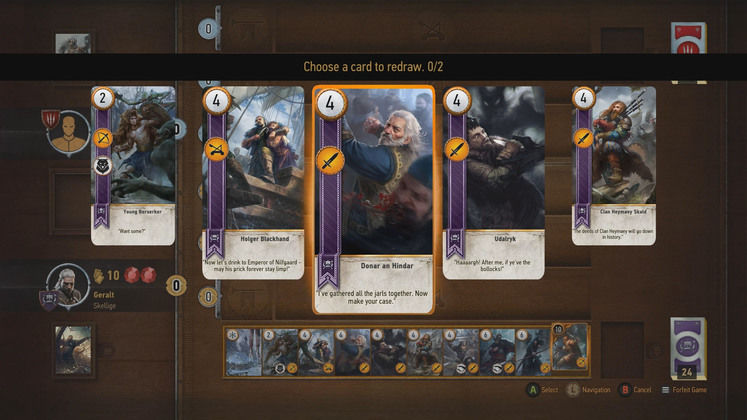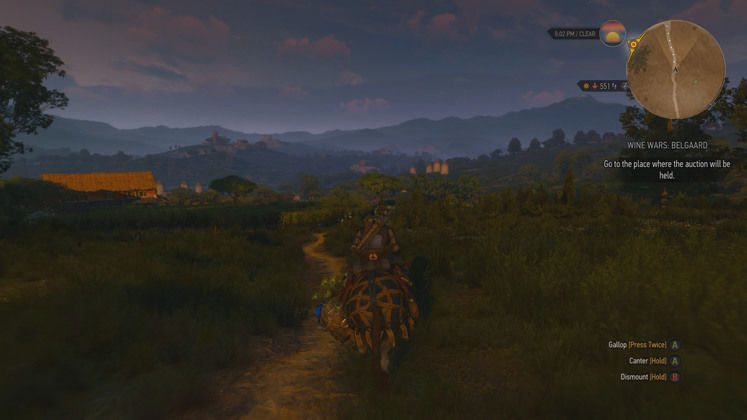The Witcher 3: Wild Hunt - Blood and Wine Review
If this turns out to be Geralt’s last adventure, it’s a worthy end
When the credits rolled on Blood and Wine, I felt pretty conflicted. Not about the quality of the expansion, mind you. No, I wondered if I made the right choices, and if I’d done all I could to make sure things turned out well. I wondered if things could have turned out better if I’d chosen differently, maybe been a bit kinder here. I wondered if the Geralt I’d been playing was driven and serious, or just a jerk. I wondered what he’d make of himself now that the quests were done, if he could ever stop being a witcher.
That confusion, that mixture of guilt and curiosity, is what defined the greatness of last year’s excellent Witcher 3. It had solid combat, sure, and an expansive world that was fun to explore, but what truly elevated it was its excellent writing, its believable characters, and its willingness to put those characters in very bad situations. Blood & Wine is more of that. It’s a new land to explore with new gameplay additions that help to add depth to high-level character progression. But the highest, most honest praise I can give is that the story, quests, and characters are all as wonderful and layered as those of the original game.
Murder has struck the peaceful wine country of Toussaint, and Duchess Anna Henrietta has called upon Geralt to track down the mysterious “beast” responsible for the killings. The main story of the expansion has a slow start, mostly driven by the humor of Geralt gruffly interacting with the chivalric knights and polite company of the French-inspired duchy. By the end, though, I’d found a cast of characters that I loved and hated as much as the likes of Ciri, Vesemir, and the Bloody Baron.
I don’t want to talk too specifically about the story, because the joy and pain of its surprises are excellent. Vampires are one of the central forces driving the plot, and their actions force Geralt to consider some uncomfortable problems as a witcher. He’s contracted to destroy monsters, but what’s he to do when confronted by creatures that can speak and reason better than his human employers? True to the dark fantasy world, the chivalric order is far less noble than they appear to be, and the monsters aren’t always quite so monstrous as they first appear.
That’s not to say everything is grim, gritty, and foreboding. Toussaint is a far more beautiful, colorful piece of country than we explored in the original release, and the sidequests are often goofier and more referential than any that have come before. In between the main plot and more serious witcher contracts, Geralt might be called on to pose for a painting, compete in a knightly tournament, or rescue the granite testicles of a particularly virile statue. They’re not all as silly as that, but those lighter moments are all fun and add gravitas to the more deadly situations.
As part of his contract, Geralt also gets a piece of land in the duchy with a vineyard villa. It’s not central to anything that happens in Blood & Wine but giving Geralt a home makes for an even greater connection to Toussaint, as well as some useful buffs. Upgrading the house and grounds will mean a better stable for Roach, a better bed for Geralt, and an herb garden that gives you replenishable access to various alchemical ingredients. None of the bonuses you get are total game-changers–maybe a little stamina boost or some extra potion uses–but they mean that riding up the hill to your home villa after a long quest is always a relief. And filling the armor stands and trophy displays makes the journeys even more memorable.
Blood & Wine also helps alleviate the overcrowded ability trees that have plagued high-level witchers. A sidequest gets you access to a new upgrade system where you can convert ability points and mutagens into new abilities and skill slots. Like the other mechanical additions, it’s not a complete game changer, but it does give you something to shoot for once you’ve reached the higher levels, which is something the original game wasn’t terrific at. If it’s been awhile since you’ve checked in with the game, you’ll also find a variety of interface improvements that make dealing with menus and inventory a much less painful process.
Finally, and perhaps most importantly, there’s a new gwent faction. They added a whole new faction in the form of Skellige, with warriors that can transform into bears and longships and nordic heroes. While the time pressures of reviewing the expansion mean that I didn’t get enough time to fully explore the new deck, it bears repeating that the expansion for the Witcher 3 also includes an expansion pack for the minigame inside the Witcher 3.
Performance & Graphics
It runs like the Witcher 3 does, though with the obvious benefits of a year of patches and driver updates. That is to say, it’s demanding, but runs well on appropriate hardware. If you’re looking into Blood & Wine, it should be after a good, long time with the original game, so you should already have a sense for how it runs. While Toussaint is a far better-looking location than most of what appeared in the original game, that’s simply a matter of it being a more beautiful country. There aren’t any extra technical bits to drag down the performance.
THE WITCHER 3: WILD HUNT - BLOOD AND WINE VERDICT
If there’s anything bad to be said about Blood and Wine, it’s that the Witcher 3 is already such a giant, expansive game that even now, a year later, you probably haven’t explored everything it has to offer. CD Projekt has built a genuinely special game and spent a year supporting it with substantial, affordable expansions. But talking about how consumer-friendly the DLC plan has been is far too mercenary a way to discuss a game so filled with vibrant characters and endearing stories. Blood and Wine is an incredible send-off for an excellent game.
TOP GAME MOMENT
There are a lot of moments I could list here, but they’re all too good to give away. Learning who the characters are and what they’re capable of. Meeting new and strange monsters. Seeing the world come crashing down around you. It’s all worth discovering for yourself.
Good vs Bad
- Terrific characters that are easy to care about
- Brand new, beautiful location to explore
- Unique, fun, and often silly sidequests
- New abilities to help the late-game progression make sense
- More gwent
- Main story takes some time to start moving











